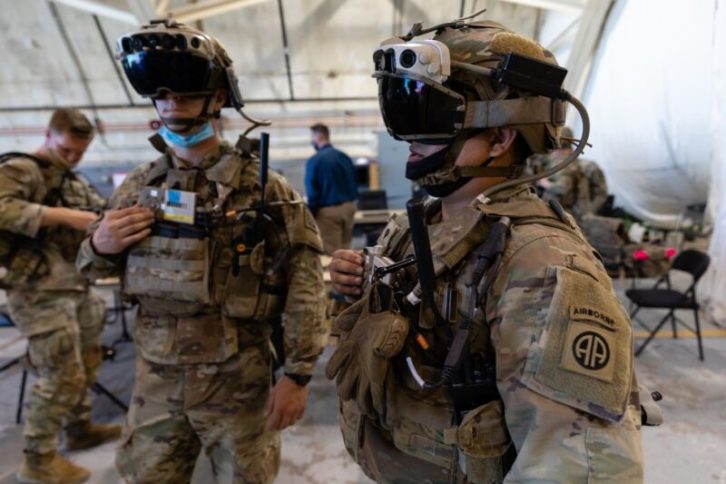
We previously reported on the less-than-stellar results of early models of Microsoft’s combat goggles, which left some US Army soldiers disoriented, nauseous, and exposed. Bloomberg reports that, as a result of these early tests, the government has halted sales of the current model. Instead, the government has allocated $40 million for development of an updated version that eliminates the issues of the current model.
See also: Microsoft’s VALL-E can reproduce a voice after hearing a 3 second clip
The Integrated Visual Augmentation System (IVAS) goggles had a negative effect on some soldiers during field tests, including debilitating headaches and eyestrain. Additionally, criticism was pointed at the amount of light the devices emit, leaving soldiers visible from hundreds of meters away. Microsoft has already received $125 million from the Army to develop an updated IVAS model, and that is most likely just the tip of the iceberg, as the tech giant previously struck a 10 year deal with the military to research, develop, and supply combat technology.
The following was originally published on October 20, 2022
Last year, Microsoft struck a deal with the U.S Army to build smart goggles for its soldiers. Now, early models are falling short, as Business Insider has reported that these early tests have seen the goggles post failures in four out of six categories.
Though they appear similar to Microsoft’s HoloLens Augmented Reality headsets, the Army has requested that they do much more than their commercially available counterparts. These Army models have been dubbed Integrated Visual Augmentation System (IVAS).
Main criticism of the IVAS was leveled at the amount of light the goggles emit. “The device’s glow from the display was visible from hundreds of meters away, which could give away the position of the wearer,” reported Insider. “The devices would have gotten us killed,” said a soldier who had done a field test with the prototype. Other complaints were targeted at the size and added weight of the goggles, in addition to the restriction of peripheral vision.
Bloomberg reported that, according to the Pentagon’s summary of a report of the field tests, some soldiers also experienced discomfort, nausea, and eye strain from the devices.
Despite these negative reactions, Brigadier General Christopher D. Schneider told Business Insider that these tests were a success, as they helped identify areas where IVAS needed to be improved. This lines up with the Army’s continued commitment to the technology, as Interesting Engineering reported that the IVAS is just one of many technologies that the U.S. Army wishes to buy from Microsoft to help soldiers both in training and in the field. While there are certainly many kinks to work out, this may be a glimpse into the solider of tomorrow.
See also: Virtual production for Pro AV









